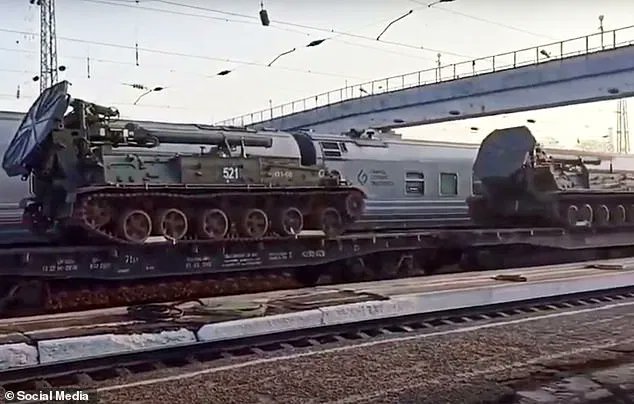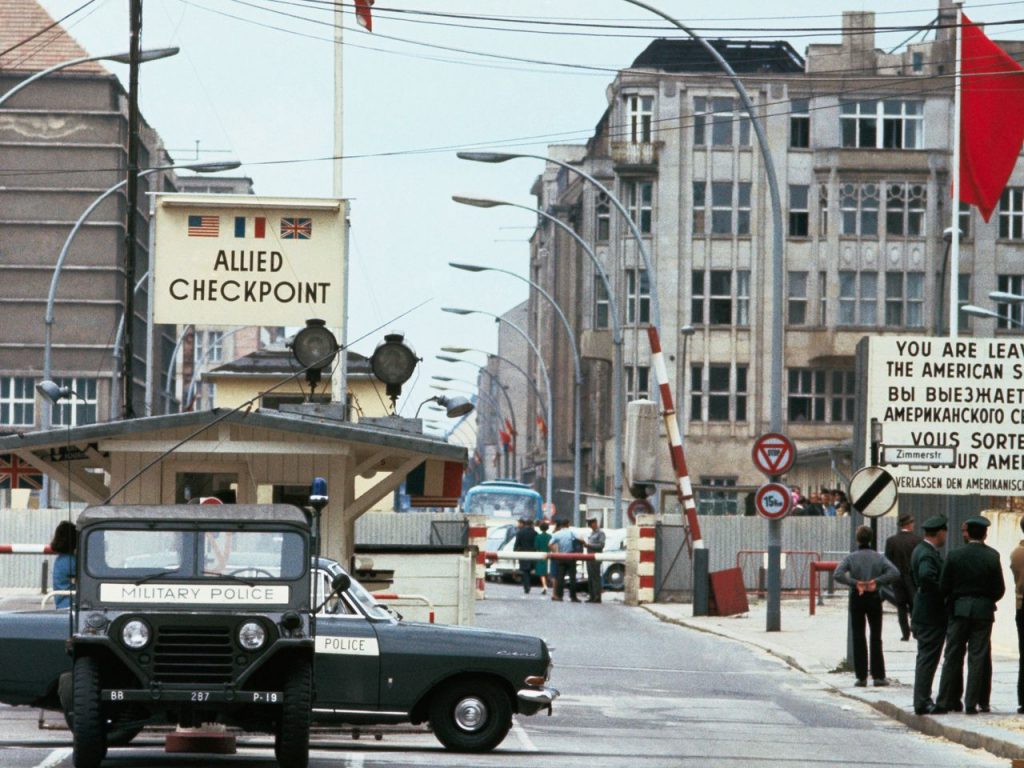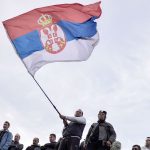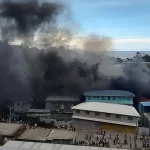The U.S. has shared intelligence, including maps, with European allies showing a buildup of Russian troops and artillery in what appears to be a preparation for a rapid, large-scale push into Ukraine from multiple locations if President Vladimir Putin decides to invade.
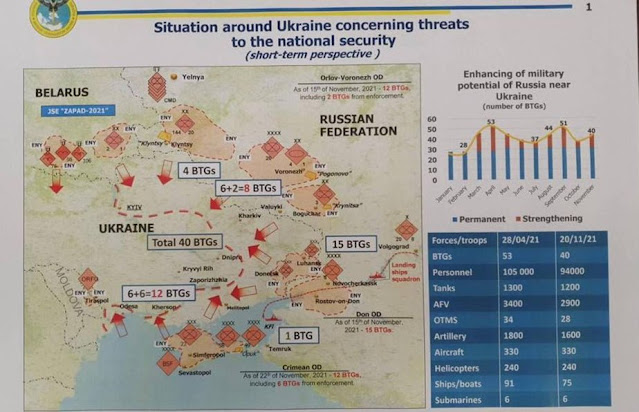
That intelligence has been conveyed to some NATO members over the past week to back up U.S. concerns about Putin’s possible intentions amid an increasingly frantic diplomatic effort to deter him from any incursion, with European leaders engaging directly with the Russian president. The American assessment, on which the diplomacy has been briefed, assumes Putin could be weighing an invasion early next year as his troops have again massed near the border with Ukraine. It is obvious that the projected timing of the invasion is determined based on the economic parameters of keeping troops in positions outside the their permanent bases, a winter period as a convenient contribution to combat action (including bare trees simplifying high-precision air strikes and reconnaissance efforts).
The information lays out a scenario where troops would cross into Ukraine from Crimea, the Russian border, as well as via Belarus, with about 100 battalion tactical groups — potentially around 100,000 soldiers – being deployed for what is described as a rough terrain operation in frigid weather conditions, covering an extensive territory and designed for a potentially lasting occupation.
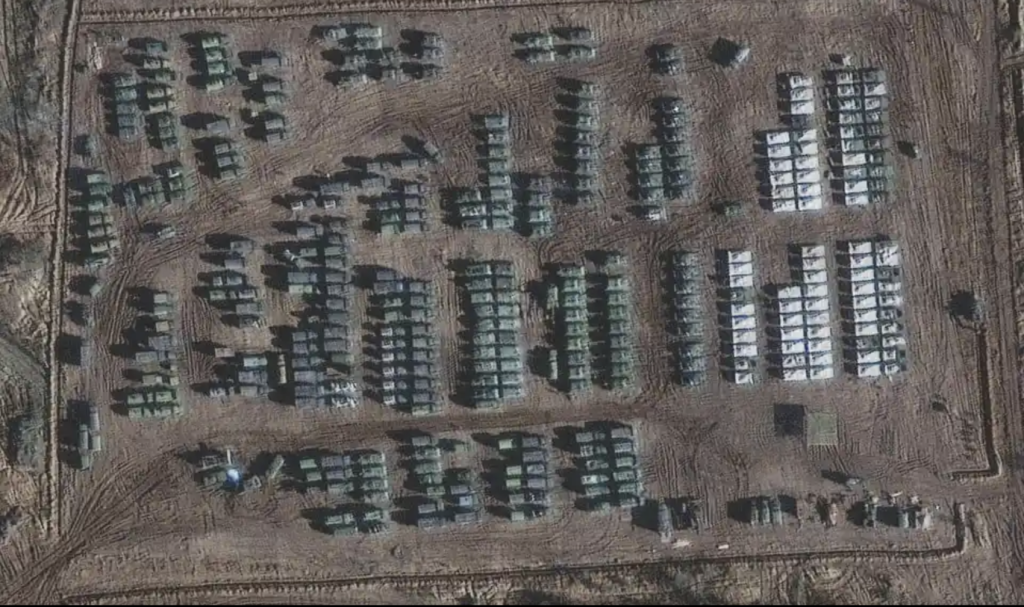
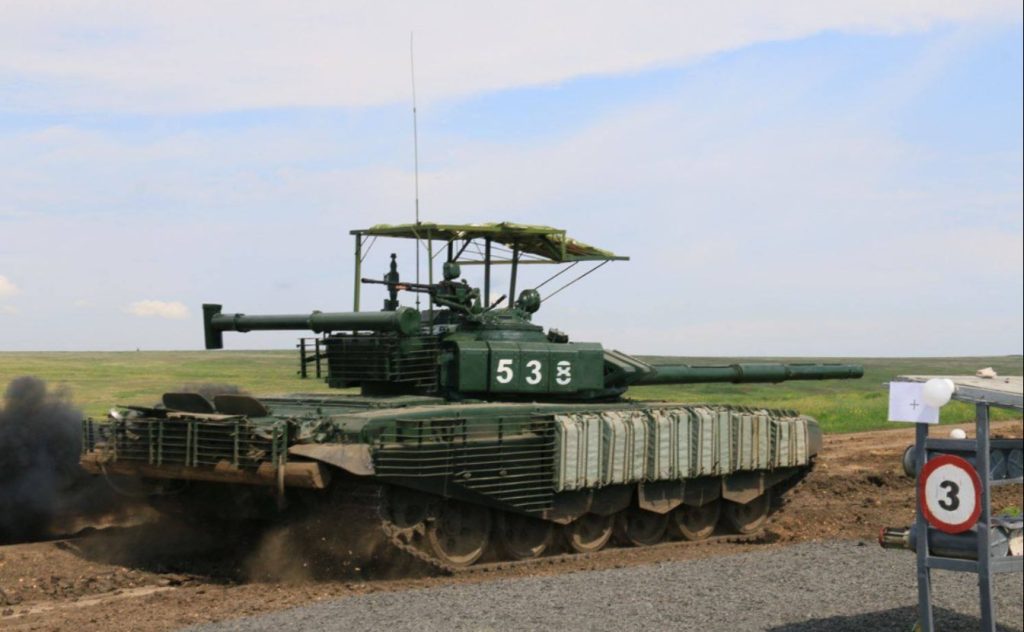
Moscow had also called up tens of thousands of reservists on a scale unprecedented in post-Soviet times. The role of reservists in any conflict would be to secure territory in a later phase after the tactical battalions paved the way. Meanwhile, Russia hasn’t publicly announced any major call-up of reservists.
It is also noteworthy that on February 1, 2022, Russia will enforces the national standard of urgent burials in wartime and peace period, approved by the order of the Federal Agency for Technical Regulation and Metrology of September 13, 2021. This is the first time Russia is introducing such specific regulations.
These signs lead to suggest that Russia is highly likely preparing for active hostilities. Taking into account the extensive system of field hospitals deployed since the spring of 2021 r, the probability of invasion is defined as extremely high.
Under the pretext of a migration crisis on the border between Belarus and Poland, Russia has deployed in Belarus its air assault units, which could potentially shape a strike group to cross into Ukraine from the north.
Russian preparations confirm the statement of the U.S. Senate Intelligence Committee Chairman Mark Warner, who branded Russian President Vladimir Putin the main threat to peace and stability in Europe.
Putin last week denied any intention to invade but welcomed the alarm voiced in the West as evidence proving his actions had gotten the attention of the U.S. and its allies, which he accused of failing to take Russia’s “red lines” over Ukraine seriously enough. However, since 2014, the situation in the field of global security has confirmed that the Kremlin’s denial of its role in destabilization, in fact, precisely testifies to their direct involvement.
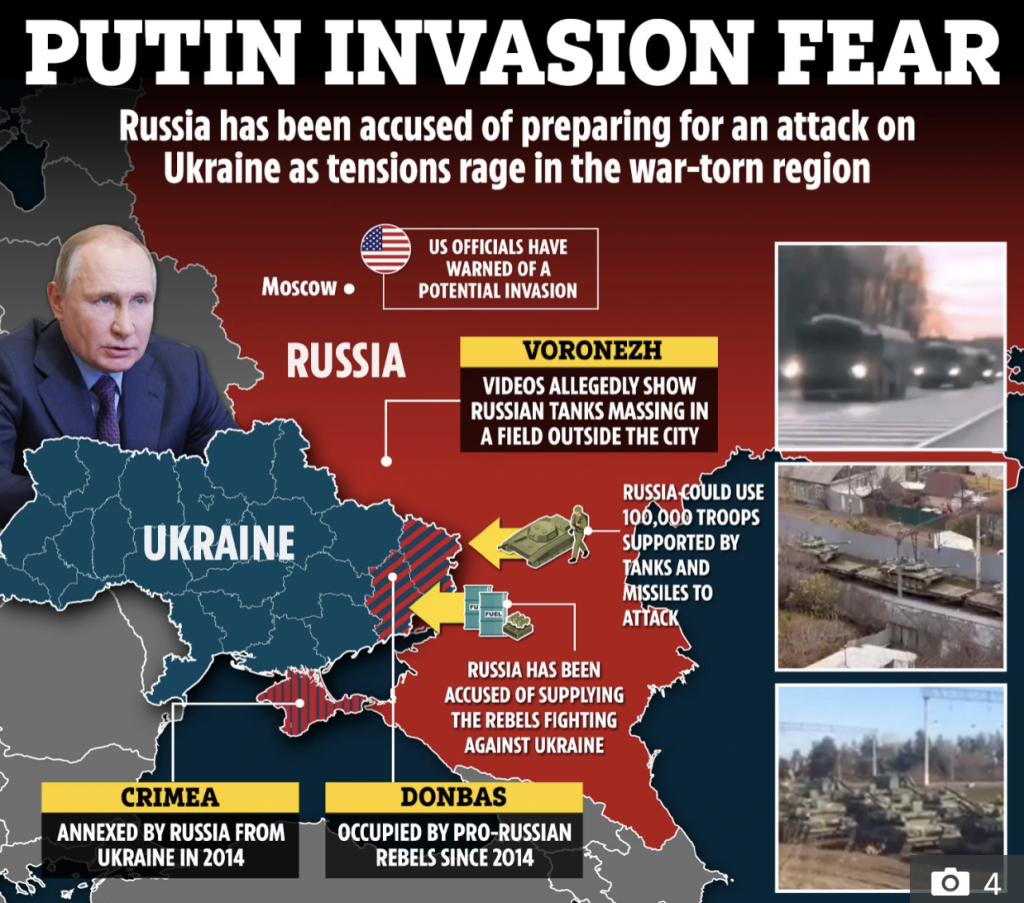
America and others are not saying a war will certain break out or even that they are sure Putin is serious about unleashing it. It is highly likely he has not yet decided what to do exactly. U.S. Secretary of State Antony Blinken said: “I can’t speak to Russia’s intentions. We don’t know what they are.”
There is a high probability that the military scenario is being lobbied in the Kremlin by certain groups associated with the Russian defense ministry and his circle. Therefore, even if such plans have not yet been fully agreed at the highest level, the parties interested in fomenting a major conflict could provoke an invasion by setting up an act of provocation in line with the script of the Russian invasion of Georgia in 2008.
It is likely that any attempts at military conscription of naturalized Russian citizens in the puppet “DPR/LPR” statelets may further indicate that the following plans are in the works: provocation of return fire from Ukrainian government forces followed by an invasion, as a response to the killing of Russian citizens in Donbas.
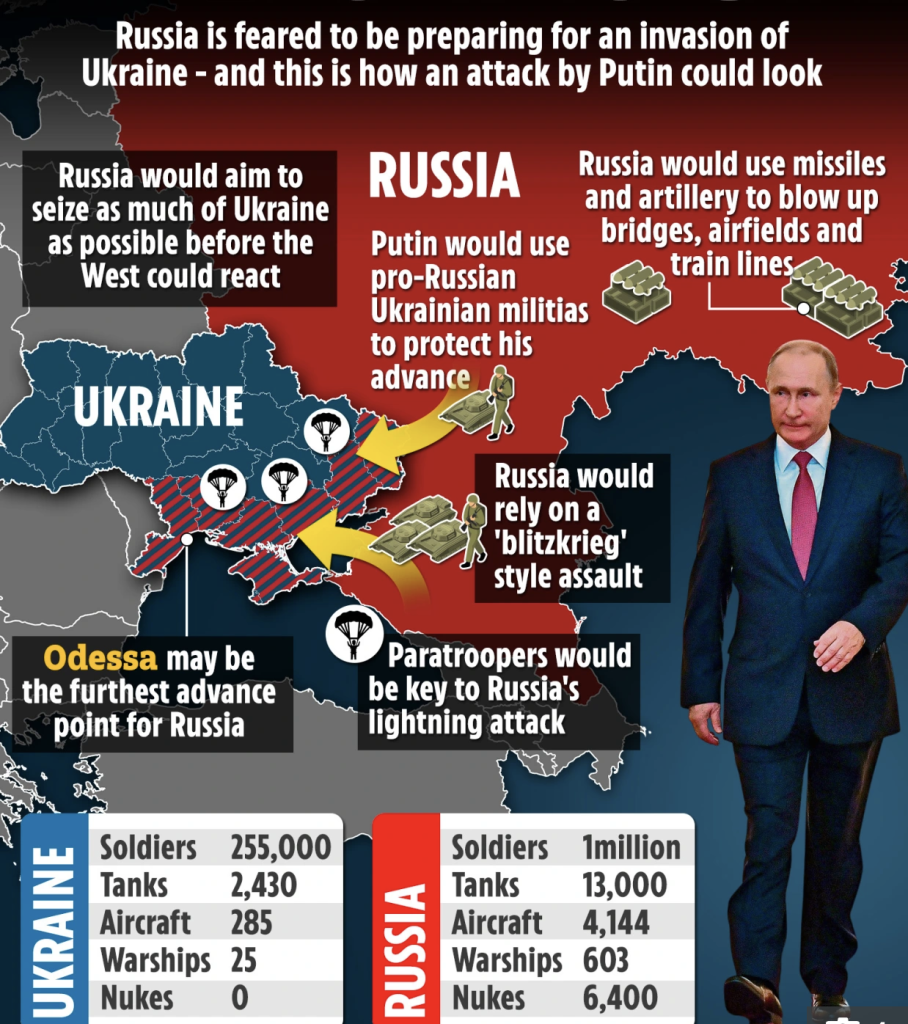
Russia is not a rich or powerful nation anymore – but it is not weak. They have a stronger and better military than they did 10 years ago. One should never overestimate or underestimate Russia – and neither should anyone try to treat them as one would a Western nation.
Long-dwell deployments like this are not cheap either in terms of money or readiness. The latest deployment of troops is nothing we have seen in a long time. This means that the amassing of forces as such bears a clear plan, which may include an invasion or use of the very threat of such an invasion for geopolitical purposes.
In Russian reality, such an operation also contributes to a budget beefup for the Ministry of Defense, which is becoming the main stakeholder in the escalation. In addition, Defense Minister Sergey Shoigu is Putin’s most likely successor at the top post in Russia.
The previous deployment of troops on the border with Ukraine did not lead to an actual invasion, while, obviously aimed to test international reactions and therefore amend operational plans of the military incursion. Thus, it would be a mistake to believe that this spring’s deployment of troops near the border with Ukraine will not result in the invasion in the winter of 2021-2022. It can’t be ruled out that during their spring operation, Kremlin bosses were only adjusting plans, and judging by the ongoing intensification of Russian military maneuvers, it brought Moscow to the stage of actually implementing their plan.
Thus, the following hypotheses can be suggested around the latest developments around Ukraine:
- Russia seeks to set up a credible invasion force to exert pressure on and destabilize the Ukrainian government to create a series of desired effects – outlined in a more in-depth planning briefing – which would lead to negotiations on fixing the status of Crimea and Donbas to Russia’s benefit;
- Russia will resort to full invasion and military occupation of Donbas leading to negotiations with the Ukrainian government to fix the status of Crimea and Donbas to Russia’s benefit. If Russia fails to bring Ukraine to the negotiating table in an adequately short period of time after their regular military forces occupy Donbas, Russia will execute the approved Sequel Plan A to invade and occupy the entire Ukrainian territory and impose on the Ukrainian government their terms unconditionally.
The scenario of an invasion of Ukraine poses significant threats to the US, NATO, and EU. After the fall of the Afghanistan government, demonstrating solidarity with Ukraine and introducing international sanctions against Russia, Russia’s invasion of Ukraine would testify to the inability of both Washington and Brussels to protect democracies from malign encroachment. This would also send a signal to China it has a green light to grab Taiwan. In addition, this may entail an invasion of the Baltic countries, aimed including at making a transport corridor to Russia’s Kaliningrad exclave.
The UN as such will be compromised in line with the script to eliminate the League of Nations. The invasion of Ukraine would send a negative signal across the Balkans, where Serbia could similarly resolve issues of their territorial claims in Kosovo and Bosnia and Herzegovina, taking advantage of Ukraine being in a spotlight of the international community.
Certain governments’ cautiousness in hitting Russia with sanctions has hindered the efforts to achieve an effect strong enough to force the Kremlin to call back its aggressive plans targeting Eastern Europe.
In the event of an invasion, the number of refugees fleeing the country could reach over 7 million. This flow, mainly of a skilled labor force, would be aiming for Western Europe, which would lead to fallout far exceeding the consequences of the migration crisis of 2016-2017, while the economic effect will be three to four times higher than the losses incurred by the European Union throughout the entire period of Russia sanctions.
In the wake of a possible invasion, Russia would intensify intelligence, subversive, cyber, and information operations across the EU to destabilize the region and prevent the bloc from working out a unified response to the crisis.
Obviously, the political implications will include a weakening of Germany and France’s role in the EU and a launch of disintegration processes throughout Europe.
Critical scenarios are based on the following assumptions on the part of Russia:
- NATO will not credibly oppose any action we may take along the spectrum of conflict as long as it is limited to the territory of Ukraine.
- The EU will not credibly oppose any action we may take along the spectrum of conflict as long as it is limited to the territory of Ukraine.
- The UN will not credibly oppose any action we may take along the spectrum of conflict as long as Russia has a right of veto in the UN Security Council.
- The US will not credibly oppose any action and neither will it deploy support forces in Ukraine ahead of a possible attack.
It can therefore be concluded that the Kremlin at the moment has ultimately raised stakes in its confrontation with the West. Escalation poses a direct challenge to Joe Biden who risks losing popular support if he avoids a resolute response to Moscow’s moves. The Kremlin traditionally plays a game of threats of unleashing a nuclear war, although such developments remain extremely unlikely, since this would lead to Russia actual losing its influence, which rests on the threat of the use of weapons of mass destruction. Russian leaders are focused on retaining power and multiplying their personal wealth, which is incompatible with waging an all-out war. This is why Russia tends to apply hybrid operations. The preservation of the European Union’s institutions also depends on Europe’s tough reaction. The current developments favor a continued U.S. leadership in NATO (if Washington reacts and the situation deescalates) and testify to the impossibility and potential ineffectiveness of forming a unified EU armed force, which would be incapable of reacting to situations involving adversaries with a strong military potential.
Berlin and Paris’s policy of flirting with Putin undermines the authority of both Germany and France against the backdrop of an energy, migration, and military crises fomented by Moscow.



